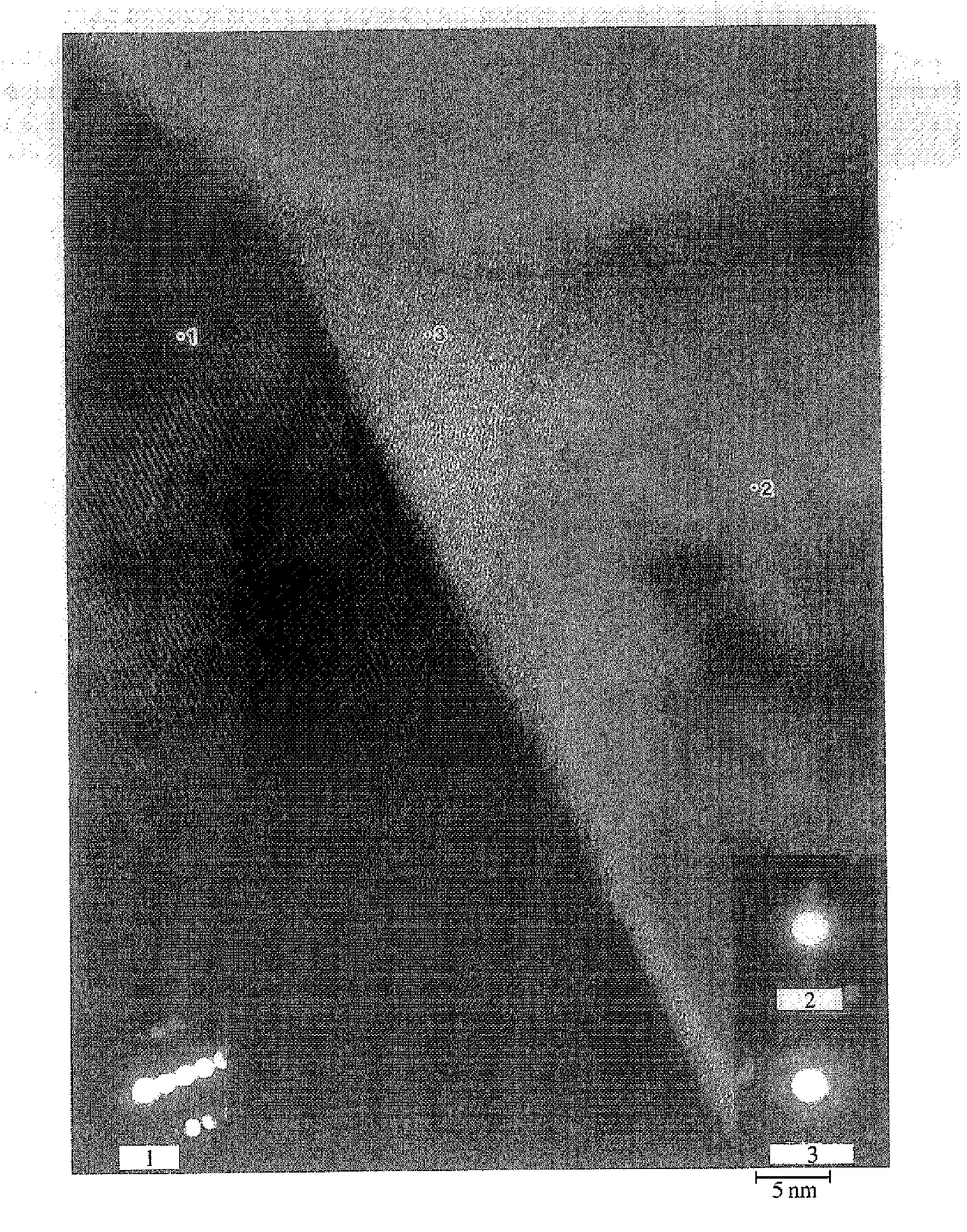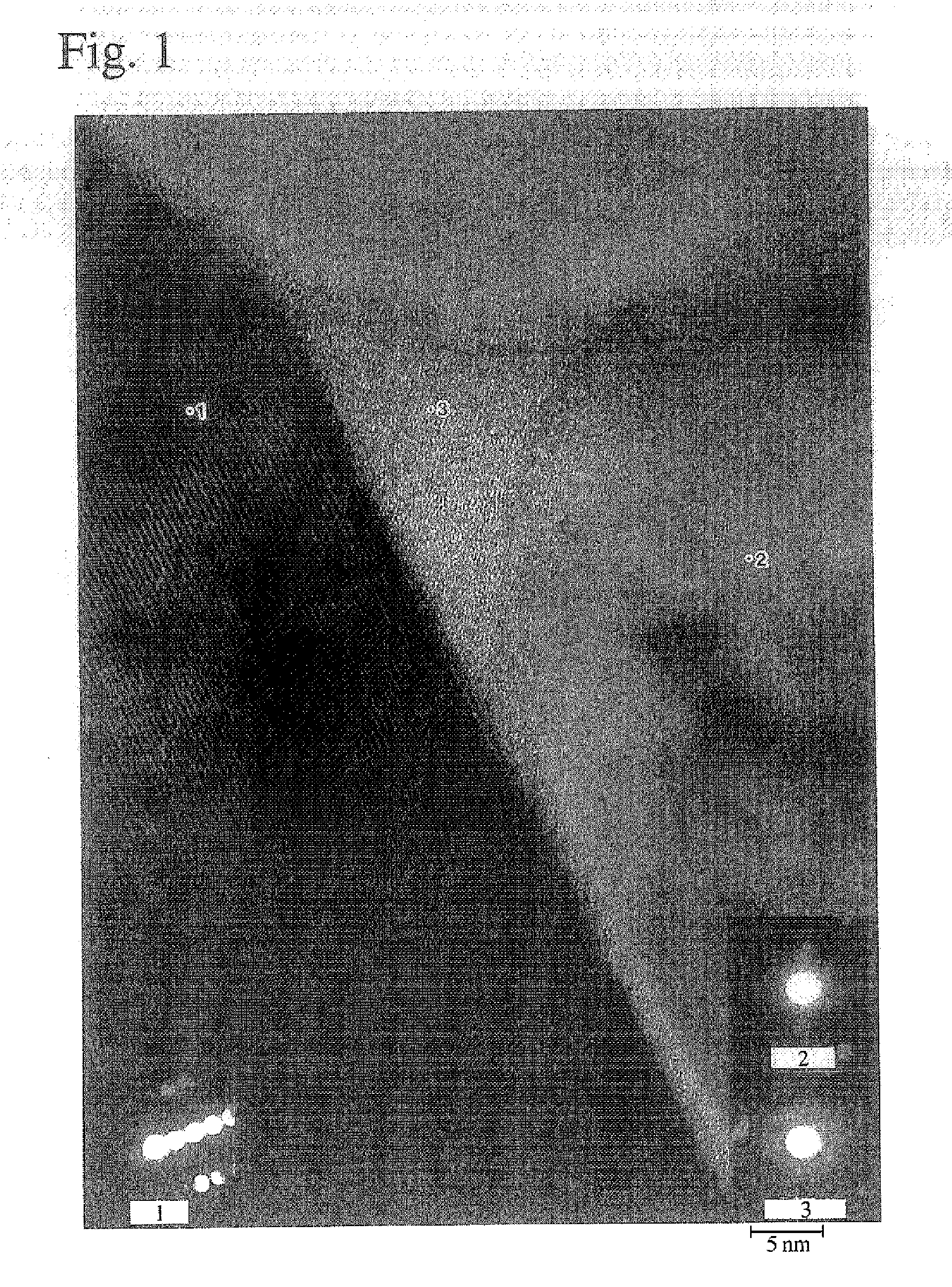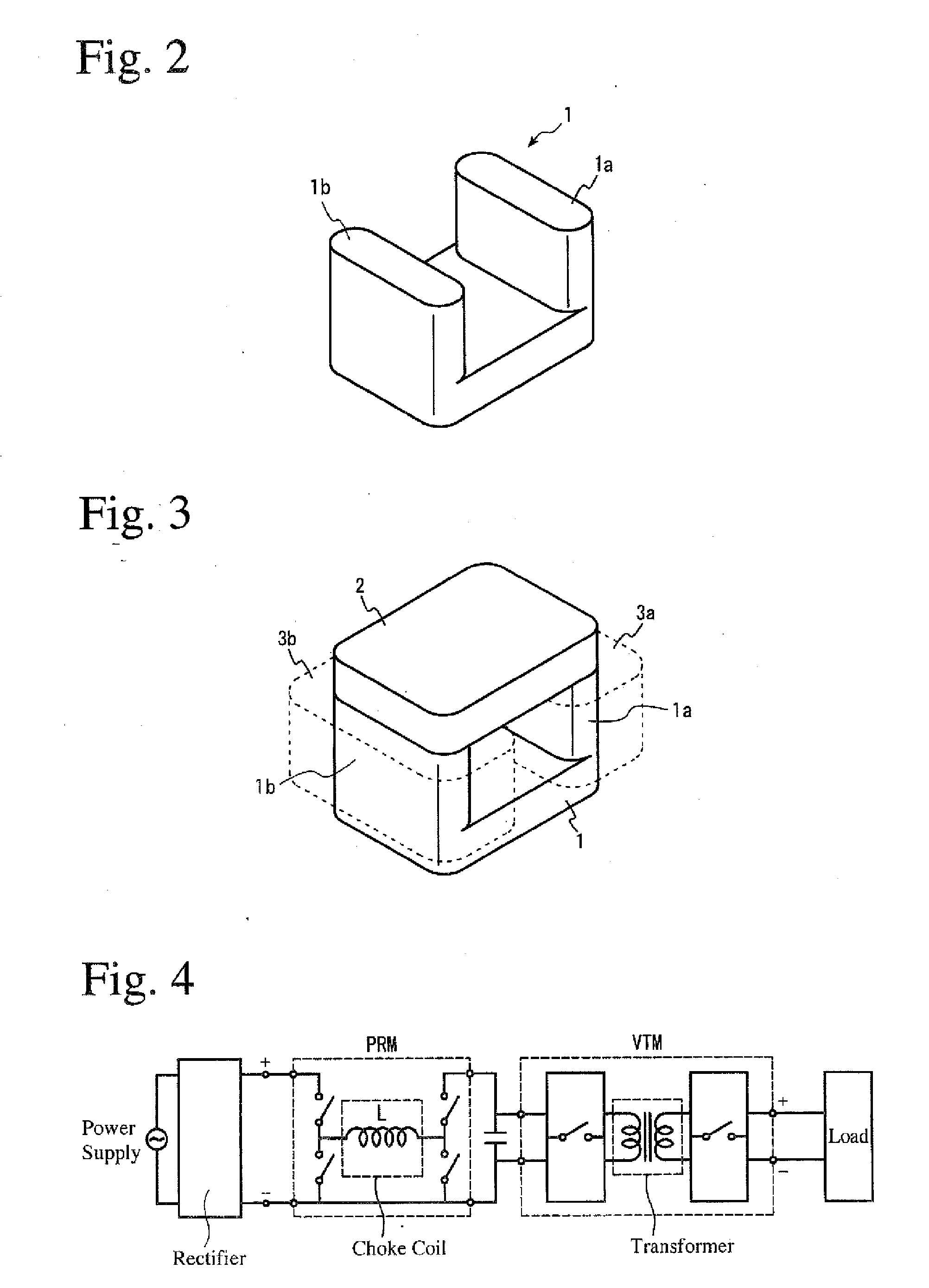Loss-Loss Mn-Zn Ferrite and Electronic Part Made Thereof nd Switching Power Supply
- Summary
- Abstract
- Description
- Claims
- Application Information
AI Technical Summary
Benefits of technology
Problems solved by technology
Method used
Image
Examples
example 1
[0063] Starting materials (Fe2O3, Mn3O4 and ZnO) for main components were wet-mixed, dried, and calcined at 900° C. for 2 hours. The calcined powder and starting materials (Co3O4, SiO2, CaCO3 and Ta2O5) for sub-components were charged into a ball mill, in which they were pulverized and mixed to an average particle size of 0.75-0.9 μm. The resultant mixture was mixed with polyvinyl alcohol as a binder, and granulated by a spray drier. The resultant granules were molded into a predetermined shape and sintered to obtain a toroidal core of 14 mm in outer diameter, 7 mm in inner diameter and 5 mm in thickness.
[0064] The sintering was conducted in the following two patterns. The sintering pattern A comprised temperature elevation from room temperature to 900° C. in the air, the substitution of the air in a sintering furnace by N2 at 900° C., temperature elevation to 1150° C. in N2, and keeping the temperature at 1150° C. for 4 hours with an oxygen concentration adjusted to 0.5% in an N2 ...
example 2
[0083] Toroidal cores of the Mn—Zn ferrites having the compositions shown in Table 4 were produced in the same manner as in Example 1. Sintering was conducted according to the pattern A.
TABLE 4Main ComponentsSub-Components (ppm)Sample(% by mol)CaCO3 / No.Fe2O3ZnOMn3O4Co3O4CaCO3SiO2Ta2O5V2O5SiO21653.06.9bal.19001200501000200241754.61.9bal.30001200501000150241854.81.9bal.35001200501000150241954.81.9bal.40001200501000150242054.81.9bal.45001200501000150242154.81.9bal.50001200501000150242254.82.9bal.20001200501000150242354.52.9bal.30001200501000150242454.52.9bal.35001200501000150242554.82.9bal.25001200501000150242654.82.9bal.40001200501000150242754.82.9bal.45001200501000150242854.82.9bal.5000120050100015024
[0084] The power loss Pcv, initial permeability μi, loss coefficient tan δ / μi, density ds, volume resistivity ρ and average crystal grain size of each Sample were measured by the same methods as in Example 1. The measurement conditions of power loss Pcv were 1 MHz and 50 mT, and 2 MHz ...
example 3
[0088] Toroidal cores of the Mn—Zn ferrites having the compositions shown in Table 6 were produced in the same manner as in Example 1. Sintering was conducted according to the pattern A.
TABLE 6Main ComponentsSub-Components (ppm)Sample(% by mol)CaCO3 / No.Fe2O3ZnOMn3O4Co3O4CaCO3SiO2Ta2O5V2O5SiO22953.77.0bal.19001200501000100243054.37.0bal.19001200501000100243154.67.0bal.19001200501000100243254.47.0bal.10001200501000100243354.47.0bal.15001200501000100243454.47.0bal.25001200501000100243554.47.0bal.3000120050100010024
[0089] The power loss Pcv, initial permeability μi, loss coefficient tan δ / μi, density ds, volume resistivity ρ and average crystal grain size of each Sample were measured by the same methods as in Example 2. The measurement conditions of the power loss Pcv were 1 MHz and 50 mT, and 2 MHz and 50 mT, respectively, at measurement temperatures of 20° C., 40° C., 60° C., 80° C., 100° C. and 120° C. The measurement results are shown in Table 7.
TABLE 7SamplePcv (kW / m3) at 1 MHz...
PUM
| Property | Measurement | Unit |
|---|---|---|
| Grain size | aaaaa | aaaaa |
| Temperature | aaaaa | aaaaa |
| Temperature | aaaaa | aaaaa |
Abstract
Description
Claims
Application Information
 Login to View More
Login to View More - R&D
- Intellectual Property
- Life Sciences
- Materials
- Tech Scout
- Unparalleled Data Quality
- Higher Quality Content
- 60% Fewer Hallucinations
Browse by: Latest US Patents, China's latest patents, Technical Efficacy Thesaurus, Application Domain, Technology Topic, Popular Technical Reports.
© 2025 PatSnap. All rights reserved.Legal|Privacy policy|Modern Slavery Act Transparency Statement|Sitemap|About US| Contact US: help@patsnap.com



